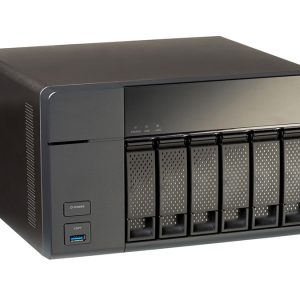IT Strategy
Today, businesses have to be prepared and responsive in a world of technology. That means that you should have plans for the unexpected in place, including cybersecurity. Trust me, we know it sounds like a lot, especially when not everyone knows their way around the complexity of technology.
Read MoreStorage is an important key when it comes to saving your information. Whether it’s for personal or business use, you need to be able to safely file and backup documents and any other information you’d like to store. Network Attached Storage (NAS) is a great way to do this, and it does it securely. NAS…
Read MoreMore and more companies are switching to cloud solutions instead of having an on premise server, meaning one located in the same physical location as the business. So how can you tell when your small business actually needs a server? Or do small businesses ever need a server?
Read MoreCybersecurity is protecting yourself agains online threats. Here at TeamLogic IT, we focus on protecting entire environments against malicious parties getting in. A lot of layers and methods of protection go into that.
Read MoreThe Centers for Disease Control and Prevention (CDC) and World Health Organization (WHO) are recommending organizations have a plan for conducting business should the COVID-19 virus continue to affect the U.S. and world populations. Not every business can afford to close or move to a “work from home” environment, so what should you consider when developing a plan for your company and workers?
Read MoreTraditionally, businesses kept data on premise where the work was actually being done. It sat on a data server somewhere, even if the server was simply a repurposed desktop computer. But with the cloud as an option, how do you determine whether you should move your data there or keep it local?
Read MoreFor most organizations, downtime is inevitable. Servers and desktops crash at some point, tornados strike, and other acts of God happen. Most of that will impact your business in some way, which is why it’s vital to have a business continuity plan. Business continuity consists of having a “what if” plan when disaster strikes, which…
Read MoreIn today’s fast-paced business world, many companies are switching to VoIP (Voice over IP) phone systems to save money and save time on the upkeep of a traditional phone system. It’s an attractive option for many businesses, but like anything else, it’s important to evaluate if it’s really the right move for your business needs.…
Read MoreMore and more companies are switching to VoIP (Voice Over Internet Protocol) for their office phone system, but is it right for your business? First, let’s explain the basics of VoIP. It takes the analog audio signals used in telecommunications and converts them to digital data that can be transmitted through the internet. As long…
Read MoreThat might sound like a sensational headline, but it’s true. A security audit can, in fact, save your business. According to a report from Verizon, 58% of malware attack victims are categorized as small businesses. And according to a 2017 report by Ponemon, cyber attacks cost small and medium-sized businesses an average of more than…
Read More- « Previous
- 1
- 2
- 3
- Next »










